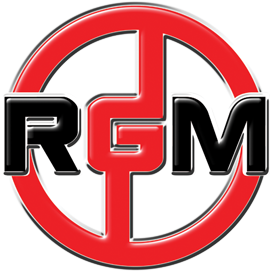Did you see it? HAVE YOU SEEN IT?!?!?!?
*takes breath*
So you might have noticed that Nintendo revealed a brand new console today. The Nintendo Switch, a rather unique, ambitious, exciting and ‘woop’ inducing device that is set to be upon us in just five months time!
After the initial reveal trailer, which you can watch below again and again and again, more details have begun to surface. This includes details from the main architects of the Switch, NVIDIA. Posting information on their blog, the gaming technology gurus have detailed some of the inner workings of the Switch and paid testament to the vision and goals of Nintendo.
The first thing they seem keen to mention is that the Switch is fun to play. For me that’s what it’s all about. Nintendo haven’t been about having the most powerful machine since the N64, so the fact that machine and indeed the games are fun to play with really sets the tone in the right way.

It seems that Nintendo went back to square one when designing the Switch; instead of upgrading a Wii and smashing a tablet into a controller (looking at you Wii U), Nintendo have seemingly rethought everything going on inside the machine: algorithms, computer architecture, system design, system software, APIs, game engines and peripherals. It feels like the machine is being treated as a wholly new device rather than belonging to the family of wrist-waggling Wii consoles.
The Nintendo Switch is reportedly powered by a custom ‘Tegra’ processor, which, according to NVIDIA, is a “high-efficiency scalable processor, includes an NVIDIA GPU based on the same architecture as the world’s top-performing GeForce gaming graphics cards.” A bold and exciting claim, it sounds like it has some technical “oomph” behind it, something that, although not the imperative, has been lacking in the past from Nintendo’s devices, possibly explaining difficult relationships with third parties. Some games probably didn’t work for the Wii or the Wii U that were released on the competitor’s machines, such as the PS3 or Xbox One, because it would probably need too much down-scaling. This does not seem to be an issue for the Switch as a raft of developers have keenly thrown their support behind Nintendo’s new clickable delight.

NVIDIA also went on to discuss what all that new tech and manpower means for games:
“The Nintendo Switch’s gaming experience is also supported by fully custom software, including a revamped physics engine, new libraries, advanced game tools and libraries. NVIDIA additionally created new gaming APIs to fully harness this performance. The newest API, NVN, was built specifically to bring lightweight, fast gaming to the masses. Gameplay is further enhanced by hardware accelerated video playback and custom software for audio effects and rendering.”
Some of those words didn’t mean much to me, but the jargon isn’t important, the ability to create whole new worlds, music, sounds and physics, whilst communicating with the operating system is certainly what you need to take from this and it’s surely what you would hope for from an advanced piece of gaming tech.
The Switch is also optimized to work both as a home console and as a mobile device, so you should be able to happily take out those dragons in Skyrim: Remastered as your dog beside you gently weeps (see the video).
 NVIDIA is integrated completely into the Switch and they seem to be proud of that fact. It will be the only current-gen console to be powered by NVIDIA. Gamesradar have analysed some of the proposed tech and have suggested that it is unlikely that the Switch will be as powerful as the Xbox One or the PS4 (both running on AMD chipsets) but make a point of saying that Switch is not to be underestimated in what it will be able to do.
NVIDIA is integrated completely into the Switch and they seem to be proud of that fact. It will be the only current-gen console to be powered by NVIDIA. Gamesradar have analysed some of the proposed tech and have suggested that it is unlikely that the Switch will be as powerful as the Xbox One or the PS4 (both running on AMD chipsets) but make a point of saying that Switch is not to be underestimated in what it will be able to do.
They note that the current development kits have been using a lesser version of the final hardware, from 2014 and an upcoming dev kit will be new and up to date. This means that there will be much more power to play with, as the dev kits are based on the same architecture as many current graphics cards. They also make a point of saying that because it is powered by a different graphics engine, it could cause headaches for developers in terms of porting games over to the Switch. However, it is probably safe to assume that NVIDIA will have thought of this and made it as easy as possible.
Of course there are still things we don’t know regarding the innards of the Nintendo Switch:
- What will the graphics engines and abilities do to the battery life?
- What is the storage (HDD) and RAM capabilities of the Switch?
- Is that screen a touch screen, if so will it play 3DS games, being cartridge based?
- What are the resolutions and frames per second numbers (as that’s all the ‘resolution brigade’ will ask, and I assure you they are, already, don’t read the NVIDIA blog’s comments if you want to avoid that particular headache).
In case you’ve forgotten or haven’t seen what all the fuss is about, check out the reveal trailer here and get on the hype train, choo choo!
Does this info about the innards of the Nintendo Switch impress you? Or are you going to wait to go hands on before making the…Switch?! Let us know in the comments or on the RGM Forums.















